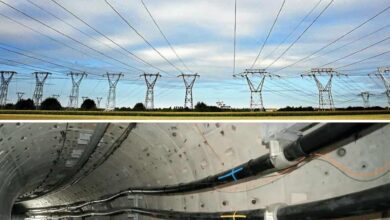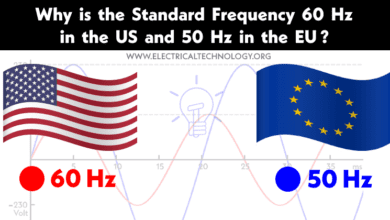Power System
-
Why are Overhead Power Transmission Lines Not Insulated?
Why Use Bare Conductors for Overhead Transmission Lines Instead of Insulated Conductors? You may have noticed that we use insulated cables for underground power transmission, as well as in industrial…
Read More » -
Comparison Between Overhead & Underground Transmission Systems
Comparison Between & Advantages of Overhead and Underground Transmission Systems Following are the main differences and comparison between underground and overhead power transmission and distribution in a typical power system.…
Read More » -
How Many Amps Will Flow in a Short Circuit Powered by a 120V, 20A Breaker?
In the Case of a Short Circuit Occurring in a 120V Circuit Powered by a 20-Amp Breaker, How Many Amps will Flow Before the Breaker Trips? There is no “one-size-fits-all”…
Read More » -
3-Phase Automatic Changeover (ATS) using Contactors and Timer
Automatic Changeover Switch (ATS) Connection using Contactors, Timer And Relay for 3-Phase Load Automatic changeover switches play a crucial role in ensuring uninterrupted power supply in various industrial, commercial and…
Read More » -
Standard and Common Voltage Levels in the US and CA – NEC
Types of Common Electrical Service and Voltage with Configuration Systems in North America The United States has some of the most complex voltage levels for both residential and commercial applications…
Read More » -
Standard Voltage (V) and Frequencies (Hz) Around the World
Common 1-Phase & 3-Phase Voltage with Frequency, # of Wires & Plugs/Outlets Used in Different Countries The following article including the table chart shows the standard household voltage in volts…
Read More » -
Why is the Standard Voltage in the US 120V/240V and 230V in the EU?
Why is the Standard Voltage in US homes 120V & 240V but 230V in the EU? Why Not Other Higher or Lower Levels of Voltage? Why Does the USA Use…
Read More » -
Difference Between 120V and 240V/230V AC Power Supply
What is the Difference Between 120V, 230V and 240V AC Power? We all know that the common voltage levels available in the US for household applications are 120V and 240V…
Read More » -
Why is the Standard Frequency 60 Hz in the US & 50 Hz in the EU?
Why is the Standard Frequency for Supply in the EU 50 Hz, But 60 Hz in the US? And Why Were Other Higher or Lower Frequencies Not Chosen? In the…
Read More » -
Advantages & Disadvantages of 50 Hz and 60 Hz Frequency Power Supply
Advantages and Disadvantages of 60 Hz (US) and 50 Hz (EU) Frequency We know that the frequency of the supply voltage in North American countries, including Canada and the US,…
Read More »









